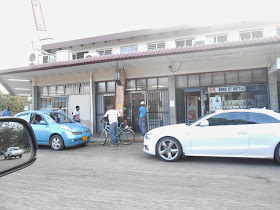Racial
and cultural interactions are fascinating in a place with such a recent
colonial past. The dust has yet to
settle in a lot of places in which tangled webs of Western culture, African culture,
21st Century expectations, traditional viewpoints, the educated, the
misinformed, the tourist, the indigenous, and the colonist all tangle together,
joined by a common passion for Africa and apparently a strange love of
affordable Chinese goods!
I
often think about the concept of the “American melting pot” vs the “American
salad bowl,” and how cultures blend,
become lost, maintain distinctness, misunderstand each other, and operate
within and outside of the context of stereotypes. For the life of me I cannot
understand why every social anthropologist has not set up camp in this country
of complicated interactions that involve an economically powerful and wealthy -but
politically powerless- white minority and an economically diverse –but mostly
povertous- politically powerful indigenous majority.
Please
be clear that I am trying to be as unbiased and un-opinionated here as
possible. I am merely stating that the complications of having a diversity of
players are immense. Witnessing these
evolutions and interactions of culture can be the messiest and/or most beautiful
thing ever.
And WHAT, you are asking, does all of this have to do with meat??
I’ll
get there.
If you keep your sense of humor, it’s actually kind of entertaining. Though there are a number of ways racial and cultural complications are played out constantly, the butcher is one of the most segregated places you will ever see in the country. From advertising and prices to products and services, the butcher makes it clear who it is marketing to before one even walks in the door.


It is hard to tell from the pictures, but the butchery pictured above -one of the most popular in town- is two different stores right next to each other.


One side advertises and caters to a crowd that
will end up paying at least five dollars a kg for meat. Here imported cheeses, frozen sea foods, and upscale pre-seasoned specialties can be found.

Around the corner the other side, often with little variety of inventory, advertises and caters to a crowd that will end up paying an average of one dollar per kg of meat.


Above is a picture from a South African chain grocery store that recently opened in our neighborhood. I unintentionally visited on opening day and was surprised to find that even then, the meat section was pungently foul. No matter what your color or culture, one thing is understood about buying meat in Africa: Go to a butcher, not to a grocery. Groceries often have a gaggingly bad smell coming from the meat section. Products that have been butchered and packaged off-sight have often been frozen and thawed ten times over before hitting the shelves.



